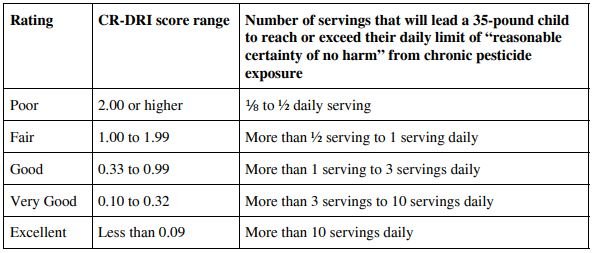Eating for the Earth: 5 Trending Questions Unpacked
Is buying local more sustainable than imported foods? Does eating less meat help the environment? These questions don’t keep me awake at night, but I have always been curious about their deeper answers. I read a variety of resources from news articles to research papers to write this blog post, and I also considered the emotional factors which impact our sustainable choices too. Please note that I am not a professional when it comes to these topics, so do not take my answers as absolute truths. My goal is help you make more educated sustainable eating decisions, and plus they are fun topics to discuss with friends and family too!
Let’s ‘take a bite’ out of these 5 trending sustainable eating questions:
What does ‘local’ food mean?
Is buying local more sustainable than imported foods?
Should I buy organic?
Does eating less meat help the environment?
What is cultured meat and is it better for the environment?
What does ‘local’ food mean?
Unfortunately, there is not an exact definition of local food, but there are commonly accepted definitions. Congress stated in the Consolidated and Rural Development Act in 2008 that food transported under 400 miles or within state lines was considered both local and regional (source). Another common definition is food sold directly from farmer to consumer such as farmer’s markets, CSAs (community supported agriculture), and roadside stands. I see local food as produce shipped with limited storage from around the Midwest (since I live in Iowa) with a preference for direct to consumer, small-scale farmers. No matter what your definition is, local food is expected to be high-quality and nutritious. Local strawberries anyone? Yum! 😊
Is buying local more sustainable than imported foods?
It depends…wasn’t that the answer you wanted to hear? 😊 It turns out comparing local to imported food is more complicated than I initially thought. We’ll first look at the factor of food miles. Food miles is the distance it takes food to get from the farmer to the consumer and commonly promoted as a benefit of local food. Research done by the Leopold Center for Sustainable Agriculture broke down various variables of local, regional, and conventional food (includes imports) trucked into Iowa. They found conventional food put on the most miles and emitted the most carbon dioxide to deliver produce while regional had the least (see table below).
They also explained regional distributors have higher efficiency by taking less trips with bigger loads than local producers, so the economy of scale resulted in less mileage. For example, a small-scale farmer with their pickup truck could have to drive to different farmers markets and stores to deliver their produce while a regional distributor picks up multiple farmers’ goods in one trip. If you’d like to jump on the bandwagon and support regional distributors, you can look into food hubs as one option. Check out this link to see what local food hubs operate in your area if you live in Iowa!
Critics have pointed out that transportation contributes to less than 10% of food’s total carbon emissions, so the whole lifecycle needs to be considered (see graphic below). This brings up an interesting point that food choice may be more important than food miles. Research done in 2008 by Christopher Weber and Scott Matthews provides insight into this claim. They estimated an average American household produces 8 kg of carbon dioxide for food emissions each year but only 5% of these emissions (0.4 kg) were due to transportation. Weber and Matthews then estimated how much carbon dioxide could be saved by replacing red meat and dairy with a plant-based diet one day a week which came out to be 0.46 kg of carbon dioxide per year. This means by not eating meat or dairy one day a week you can save as much carbon dioxide as you would use in transporting your food each year. How interesting!
The realities of our food system are fascinating, aren’t they? While I can’t see the entire picture, I see it’s important to look at a combination of food miles and food choice for sustainable eating.
Should I buy organic?
The term ‘organic’ is everywhere in the world of sustainable food. What does organic mean? Organic food is certified to meet strict standards including documenting farm practices, no synthetic fertilizers, annual audits, and more set by the USDA Organic Standards (source). This said, you need to watch for the appropriate labeling to make sure what you’re buying is truly organic. Products with the USDA Organic seal (see below) are made with 95-100% organic ingredients. Products made with 70% or more organic ingredients can’t use the USDA seal but can say, “Made with Organic Ingredients”. Products with less than 70% organic ingredients can’t say organic except for any specific ingredients on the ingredient list.
USDA Organic Seal
My next question was should I buy all organic produce? Organic food costs 10-20% more than conventional produce depending on where and what you buy, so this was an important question. Consumer Reports conducted an extensive analysis of 35 types of organic and non-organic produce tested for over 450 pesticides to evaluate their risk for chronic pesticide exposure. They created their own rating system (see below) according to multiple factors such as how often the pesticide appeared on samples, how many pesticides, and what specific pesticides appeared, and compared this to the daily serving size acceptable for a 35-pound child to eat with ‘no reasonable harm’ of chronic pesticide use.
Consumer Reports found 63% of non-organic produce rated as Good or higher, but 20% earned their lowest score including peaches, green beans, and cherries. Interestingly, spinach was rated ‘Poor’ in both organic and non-organic categories! Here’s a snapshot of their resulting Shopping Guide:
Consumer Reports findings align similarly with the Environmental Working Group’s (EWG) annual Dirty Dozen list. This list comes out every year after testing for 210 pesticides on 46,500 samples of various fruits and vegetables. Here’s the 2023 Dirty Dozen list:
The EWG also makes a Clean 15 list of produce with the least amount of pesticide residue risk. The 2023 list is:
It’s ultimately up to you what you buy organic or non-organic, but I’m convinced by these resources to buy specific organic produce depending on its pesticide risk to balance my budget and health needs.
Does eating less meat help the environment?
A frequent question I get asked since I’m into sustainable living is, are you a vegetarian? I’ve grown up eating meat, but it’s been on my mind to seek the truth behind the impact of eating meat. My research has shown from a variety of sources that meat is one of the most impactful foods on the environment. I will focus on beef specifically as it continually tops the chart for the most emissions. To give you an idea, the energy required to produce 1 kilogram of beef is 60 times more than a vegetable. Cattle also release methane which is 28 times more powerful as a greenhouse gas than carbon dioxide.
Project Drawdown is an epic company analyzing climate solutions and a plant-rich diet is the third most impactful in their top solutions list! They came to this conclusion by analyzing two scenarios if 50% or 75% of the world’s population switched to a plant-rich diet by 2050 and found it would reduce 78-103 gigatons of carbon dioxide due to reducing land clearing, fertilizer use, and greenhouse gas emissions. In comparison, Project Drawdown predicts electric cars to reduce 7.7-9.8 gigatons of carbon dioxide by 2050.
This video, What if the Whole World Went Vegetarian?, by AsapScience additionally does a great job of analyzing the impacts of a plant-rich diet. Check it out!
On the other side of this discussion, there are multiple grazing practices to promote carbon sequestering. Silvopasture incorporates trees into grazing lands and can bring additional revenue for farmers such as nuts, fruit, and mushrooms. Project Drawdown estimates this practice can reduce 27-42 gigatons of carbon dioxide due to the increase carbon sink of trees. Regenerative grazing involves rotating herds routinely to allow grazed land to recover and grow thicker roots to absorb more carbon from the air. Project Drawdown estimates this practice to sequester between 14-21 gigatons of carbon dioxide. We can’t forget that meat has health benefits such as high amounts of iron, protein, and zinc which can be hard to replace easily with plants, and I also had a local farmer tell me the land his cows graze on can’t be used for crops even if he wanted to grow them instead.
After my research, I have concluded meat has a place in our diet but it can be reduced. Many first-world countries such as the United States have the luxury of regularly eating meat, but we have seen higher rates of heart disease, diabetes, and premature death connected with this diet. For both our health and the environment, I want to eat less red meat and choose meats from local farmers, so I can ask about their grazing practices.
Does it also feel challenging to you to eat less meat? I always advocate for changing one thing at a time, so try buying less red meat or eating one less meal a day with meat in it. I’m right there with you, we can do it!
What is cultured meat and does it help the environment?
This is a fitting question to follow our discussion of the impact of meat on the environment! 😊 Cultured meat is made from a living animal’s stem cells which are cultivated in a nutrient-filled environment to grow into meat. Sound confusing? Here’s the general steps and a visual for how cultured meat is produced:
Stem Cell Extraction- a biopsy is performed to take stem cells from a living animal with minimal invasion. Stem cells are used as as they can self-regenerate into the various types of cells needed to make the final meat product.
Stem Cell Culturing- a specific environment of carbohydrates, proteins, and fats is needed to help the stem cells multiply into trillions of cells. Fetal bovine serum (baby cow) was commonly used to help stem cells quickly multiply, but now there are a variety of plant-based serums used too.
Scaffolding- products such as collagen and gelatin are added as scaffolding agents to stimulate the growth of stem cells into muscle fiber. The cells and scaffolds are placed into bioreactor tanks to provide a consistent supply of nutrients and temperature as they grow.
Harvest Meat- the muscle fibers continue to grow until they are sheets of meat and taken out of the bioreactor.
Supplement Meat Additives- Fat, color, and flavoring are added to the meat to give it the full profile of what we know as meat.
Now we know how cultured meat is made, what about its implications for the environment and our health? Is it the meat of the future? Cultured meat includes a variety of products (chicken, fish, egg whites, etc.), but we are going to zoom in on the pros and cons of beef which is known as the most impactful meat on the environment.
Cultured Meat Pros-
Greenhouse Gas Reduction- By eliminating the need to raise cattle or crops to feed them, researchers from CE Delft in the Netherlands estimate 92% of greenhouse gases can be reduced making cultured beef products by 2030.
Increase Nutrition- Making meat in a lab allows for the introduction of outside ingredients such as vitamins and healthy omega-3 fats into the meat. Companies such as UPSIDE Foods are also talking about removing less desirable aspects of meat such as saturated fats and cholesterol.
Reduced Antibiotics- Cows are commonly given antibiotics to avoid or prevent disease on the farm, but antibiotics aren’t needed when the beef is produced in a clean lab environment.
Protein Access for Developing Countries- Many people in third-world countries have limited access to quality protein sources, so cultured meat could be a solution with its ability to produced anywhere there’s a facility.
Cultured Meat Cons-
Scaling Relies on Renewable Energy- When looking to scale up the process of cultured meat, research has found the energy intensive process to make cultured meat not as ‘environmentally friendly’ as it’s marketed (see energy demand below). Research from CE Delft found the total carbon emissions of cultured meat was higher than pork and chicken in 2030 depending on the energy source of the cultured meat facilities. The researchers concluded renewable energy was a crucial part of successfully scaling cultured meat.
Meat is Processed- my biggest concern with cultured meat is how it’s highly processed. The stem cells come from a cow, but the rest is all a man-made process. More and more research is coming out about the negative implications of processed food, and I would imagine processed meat would fall under this category too. How would our bodies process such an unnatural product?
High Meat Consumption Continues- Cultured meat may prove to be better for the environment in the future, but it could perpetuate the issue of the high meat consumption. Rather than eating less meat or choosing different meat options, consumers would claim they’re eating environmentally-friendly meat, so it doesn’t matter how much they eat.
Negative Impact on Farmers- More than 1 billion people make their living off of raising and processing meat. Cultured meat has the potential to undercut the price of meat as it scales up, and then farmers would need to increase their prices which are already high. I’m not an economist, so the market implications are surely more complicated, but cultured meat will impact farmers around the world which we need to consider.
No matter what the implications of cultured meat, the reality of having it on the grocery shelves is getting closer. In November 2022, the FDA approved UPSIDE Food’s chicken as safe to consume and the next step would be approving it for sale. I won’t be buying processed meat as it’s so far removed from nature, so I’ll be looking to support local farmers practicing the carbon sequestering practices I described above. What do you think?
I had a blast looking into these tough to answer sustainable eating questions! I hope you feel more knowledgeable on these topics and you can keep the conversation going with friends and family by sharing this post! Still ‘hungry’ and want actionable tips on sustainable eating? Read my Eating ‘Green’ blog post!










